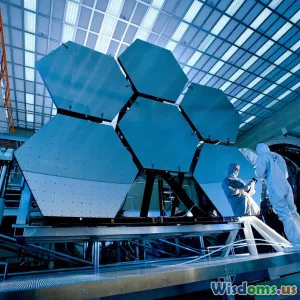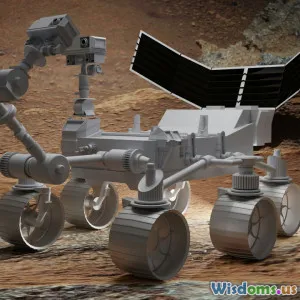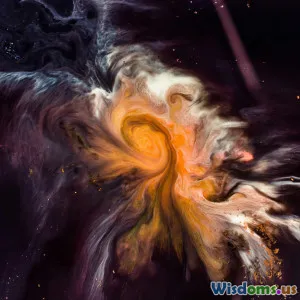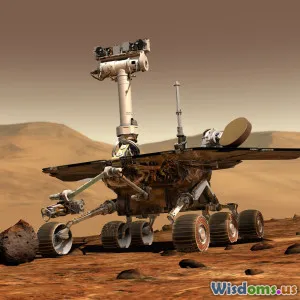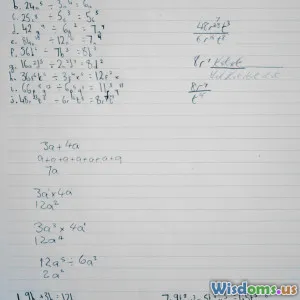
Exploring the Solar Wind and Its Implications
7 min read Delve into the solar wind, its nature, effects on Earth, and significance for space exploration and technology. (0 Reviews)
Exploring the Solar Wind and Its Implications
Introduction
Imagine a continuous stream of charged particles flowing outwards from the Sun, invisible yet immensely powerful, shaping the space environment around Earth and influencing our technology and space missions. This phenomenon, known as the solar wind, carries a cosmic breeze charged with complex interactions and surprising consequences. Understanding the solar wind is crucial for predicting space weather, protecting satellites, and planning future space exploration. This article ventures deep into what the solar wind is, its critical role in our solar system, and the wide-reaching effects on Earth and beyond.
What is the Solar Wind?
The solar wind is a flow of charged particles—mainly electrons and protons—that are constantly ejected from the Sun’s outer atmosphere, the corona. Unlike the Sun’s light, which travels at the speed of light, these particles move slower (ranging from 300 to 800 kilometers per second) but carry enough energy to impact planetary environments.
The concept dates back to the late 1950s when Eugene Parker first proposed the idea of a supersonic solar wind. This was revolutionary in understanding why space near Earth is filled with plasma rather than vacuum.
Structure and Composition
The solar wind is composed mostly of ionized hydrogen (protons) and helium nuclei, along with embedded magnetic fields originating from the Sun’s corona. These magnetic fields create a spiral pattern known as the Parker Spiral due to the Sun’s rotation.
There are two main types:
- Fast solar wind: Originates from the Sun’s polar coronal holes and travels at speeds up to 800 km/s.
- Slow solar wind: Emerging from the equatorial regions, slower at around 300 km/s and denser.
Effects of Solar Wind on Earth
Although Earth’s magnetic field shields us from the worst of the solar wind’s impact, its influence is profound and multi-faceted.
Formation of the Magnetosphere
Earth’s magnetic field creates a protective bubble called the magnetosphere, deflecting most solar wind particles. However, some particles get trapped and funnel toward the poles, causing spectacular auroras.
Auroras: Nature’s Light Show
The solar wind energizes the particles in Earth’s atmosphere, leading to the dazzling light displays called the Northern and Southern Lights. These colorful phenomena are a visible reminder of the solar wind’s interaction with our planet.
Geomagnetic Storms and Technological Impact
When intense streams of solar wind or coronal mass ejections (CMEs) arrive, they disturb the magnetosphere, causing geomagnetic storms. This can lead to:
- Power grid failures: In 1989, a geomagnetic storm caused by solar wind disruptions left Quebec without power for hours.
- Satellite damage: Charged particles can degrade satellite electronics and affect GPS signals.
- Radio communication disruptions: Solar storms affect ionospheric conditions, impacting high-frequency radio communication.
Implications for Space Exploration
The solar wind shapes conditions for all space missions.
Radiation Hazards for Astronauts
Solar energetic particles pose significant risks to the health of astronauts, especially beyond Earth’s magnetosphere, such as on lunar or Mars missions. Shielding against this radiation remains a challenge.
Impact on Spacecraft Stability and Electronics
Spacecraft exposed to charged particles face potential electronics malfunctions and surface charging, which can cause anomalies or even terminal failure if not accounted for.
Navigational Adjustments
Solar wind disturbances affect navigation systems relying on satellite signals, requiring corrective algorithms to maintain accuracy for deep-space probes and Earth orbiters alike.
Monitoring and Predicting Solar Wind
Efforts to measure and predict solar wind conditions are crucial for mitigating its impact.
Satellites like NASA’s Advanced Composition Explorer (ACE) and the Solar and Heliospheric Observatory (SOHO) provide real-time data on solar particle flux and magnetic fields.
More recently, the Parker Solar Probe, launched in 2018, is traveling closer to the Sun than ever before, aiming to provide unprecedented insights into solar wind origins.
Improved forecasting models help prepare for geomagnetic storms, safeguarding infrastructure and astronaut missions.
Future Directions and Challenges
As humanity expands its presence in space, understanding the solar wind will become more vital. Planned deep-space missions will need to account for the solar wind’s effects proactively.
Emerging technologies to develop:
- Enhanced shielding materials for radiation protection
- Robust satellite designs tolerant to particle bombardment
- Better predictive algorithms integrating solar magnetic activity data
Astronomer Dr. Sarah Gibson emphasizes, “Solar wind research is key not just for space science but for protecting our technological civilization on Earth.”
Conclusion
From invisible streams of charged particles to breathtaking auroras, the solar wind is a dynamic force that links the Sun with Earth and the broader solar system.
Its influence on technology, planetary environments, and human spaceflight cannot be overstated. Advances in observation and modeling are enabling us to understand and anticipate its behavior better, ensuring we can protect our infrastructure and explorers from its sometimes volatile impacts.
The solar wind is more than a scientific curiosity—it’s a celestial phenomenon that affects our lives and our future in the cosmos.
Understanding this stellar breath inspires both caution and curiosity as we journey farther into the universe.
References:
- Parker, E.N. “Dynamics of the Interplanetary Gas and Magnetic Fields,” Astrophysical Journal, 1958.
- NASA Solar Heliospheric Observatory (SOHO) Data Archive
- Space Weather Prediction Center: Effects of Solar Wind on Technology
- “The Parker Solar Probe Mission,” NASA, 2018
- Pulkkinen, A. “Space weather: Terrestrial perspective,” Living Reviews in Solar Physics, 2007.
Rate the Post
User Reviews
Popular Posts










